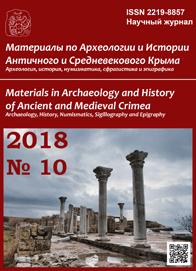“Bad-style” Coins or Imitation?
“Bad-style” Coins or Imitation?
Author(s): Ilya S. ProkopovSubject(s): History
Published by: Нижневартовский государственный университет
Keywords: numismatics; coins; tetradrachims; imitations; Celts; Thracians
Summary/Abstract: The aim of this article is to discuss a very important topic of interest and to define the character of an immense group of coins, namely — the group of the tetradrachms, which, according to the author, are called the tetradrachms of the island of Thasos, and the “Thasos type” tetradrachms of “bad-style”. A number of authors have supported the hypothesis that the coins in question are eastern Celtic imitations. The author of this article has analyzed a number of large coin hoards, which he has already sorted and published. The methodology includes the analysis of spatial distribution; the examination of the internal chronology and dynamics of the coinage; a “die-study”. The author has divided the coinage in terms of names and types of Thasians present on the coins in three main groups: original — up until approximately the end of the 2nd Century BCE; of a “Thasos type” under the control of the Roman administration in Macedonia in the period up until ca. 80 BCE; imitative — after 70 BCE. At the same time, the author has given his own definition regarding which tetradrachms of the “Dionysios Soter” type are imitations. These are the rough and almost completely barbarous imitations, on which the legends are simply forged by marks. The images are stylized and they diverge from the prototype. The coins themselves, which have so far been called imitations, the author has divided into three groups: the first and the second ones he refers to as “bad-style” coins, whereas the third one he calls “real” imitations. The question of the so-called imitations of the tetradrachms of the Macedonian regions has been touched upon, as well.
Journal: Материалы по археологии и истории античного и средневекового Причерноморья
- Issue Year: 2018
- Issue No: 10
- Page Range: 373-387
- Page Count: 15
- Language: English

